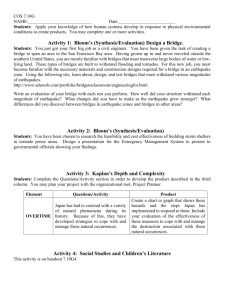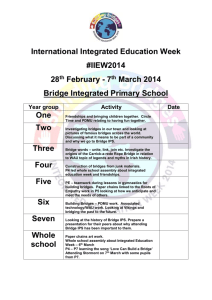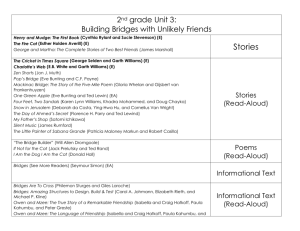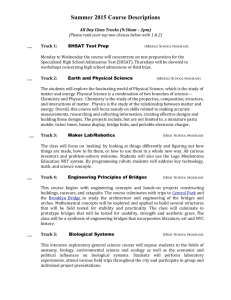20-7 Proposal Covered Bridge Collision Protection Systems
advertisement
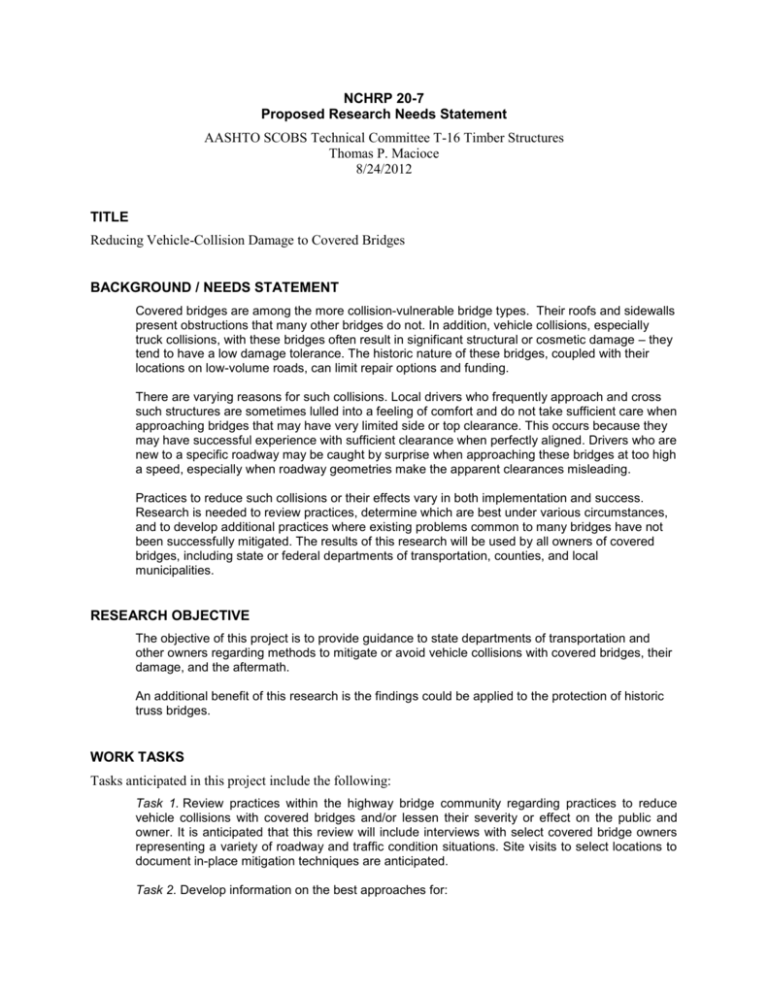
NCHRP 20-7 Proposed Research Needs Statement AASHTO SCOBS Technical Committee T-16 Timber Structures Thomas P. Macioce 8/24/2012 TITLE Reducing Vehicle-Collision Damage to Covered Bridges BACKGROUND / NEEDS STATEMENT Covered bridges are among the more collision-vulnerable bridge types. Their roofs and sidewalls present obstructions that many other bridges do not. In addition, vehicle collisions, especially truck collisions, with these bridges often result in significant structural or cosmetic damage – they tend to have a low damage tolerance. The historic nature of these bridges, coupled with their locations on low-volume roads, can limit repair options and funding. There are varying reasons for such collisions. Local drivers who frequently approach and cross such structures are sometimes lulled into a feeling of comfort and do not take sufficient care when approaching bridges that may have very limited side or top clearance. This occurs because they may have successful experience with sufficient clearance when perfectly aligned. Drivers who are new to a specific roadway may be caught by surprise when approaching these bridges at too high a speed, especially when roadway geometries make the apparent clearances misleading. Practices to reduce such collisions or their effects vary in both implementation and success. Research is needed to review practices, determine which are best under various circumstances, and to develop additional practices where existing problems common to many bridges have not been successfully mitigated. The results of this research will be used by all owners of covered bridges, including state or federal departments of transportation, counties, and local municipalities. RESEARCH OBJECTIVE The objective of this project is to provide guidance to state departments of transportation and other owners regarding methods to mitigate or avoid vehicle collisions with covered bridges, their damage, and the aftermath. An additional benefit of this research is the findings could be applied to the protection of historic truss bridges. WORK TASKS Tasks anticipated in this project include the following: Task 1. Review practices within the highway bridge community regarding practices to reduce vehicle collisions with covered bridges and/or lessen their severity or effect on the public and owner. It is anticipated that this review will include interviews with select covered bridge owners representing a variety of roadway and traffic condition situations. Site visits to select locations to document in-place mitigation techniques are anticipated. Task 2. Develop information on the best approaches for: Signage that effectively provides warning about the covered bridge and results in altering driver performance with regard to successful navigation of the bridges Other warning or deterrent structures and practices that may have applicability (e.g., hanging “sounding bars” such as those used in some low-clearance parking garages) Policies and procedures that may result in altering driver behavior or recouping funds related to damaged bridges (e.g., rigorous pursuit of funds through at-fault drivers’ insurance) Covered bridge design refinements that may reduce vulnerability to crashes or the ensuing damage Where feasible, report on techniques that were tested and found to be unsuccessful so that they might be avoided by other owners. Task 3. Develop case studies that guide bridge professionals through recommended procedures for the selection of mitigation strategies based on various covered bridge parameters (e.g., traffic type and volume, approach geometry, bridge importance). Task 4. Develop a report that describes recommended methods and procedures, as well as case studies using these procedures. Task 5. At an appropriate time during the research, present work-in-progress to an appropriate unit within the AASHTO Highway Subcommittee on Bridges and Structures . Task 6. Based on the guidance document, and in conjunction with one or more state agencies, select a site in need of mitigation and demonstrate the use of the guidance documents through a “before and after” case study, where the “before” case would indicate the problem and need for mitigation (preferably at a bridge with a collision history) and the “after” case would show how and why a mitigation strategy was selected and what it looks like in place (post construction). Report on the trial application success and revise the Task 4 report as needed. Task 7. Develop and conduct a webinar that may be used to inform potential users as to the contents of the report and its potential application to their covered bridge population. URGENCY Because funding and repair options for covered bridges can be extremely limited, anything that avoids or mitigates damage from vehicle collisions is very helpful to a state’s bridge office. FUNDING REQUESTED AND TIME REQUIRED It is estimated that this research will take 15 months to complete and will require $75,000. CONTACT PERSON Tom Macioce, P.E. Chief Engineer Pennsylvania Department of Transportation Bureau of Project Delivery Bridge Design and Technology Division 400 North Street, 7th Floor, Harrisburg, PA 17120 Phone: 717.783.7615 E-mail: tmacioce@pa.gov

